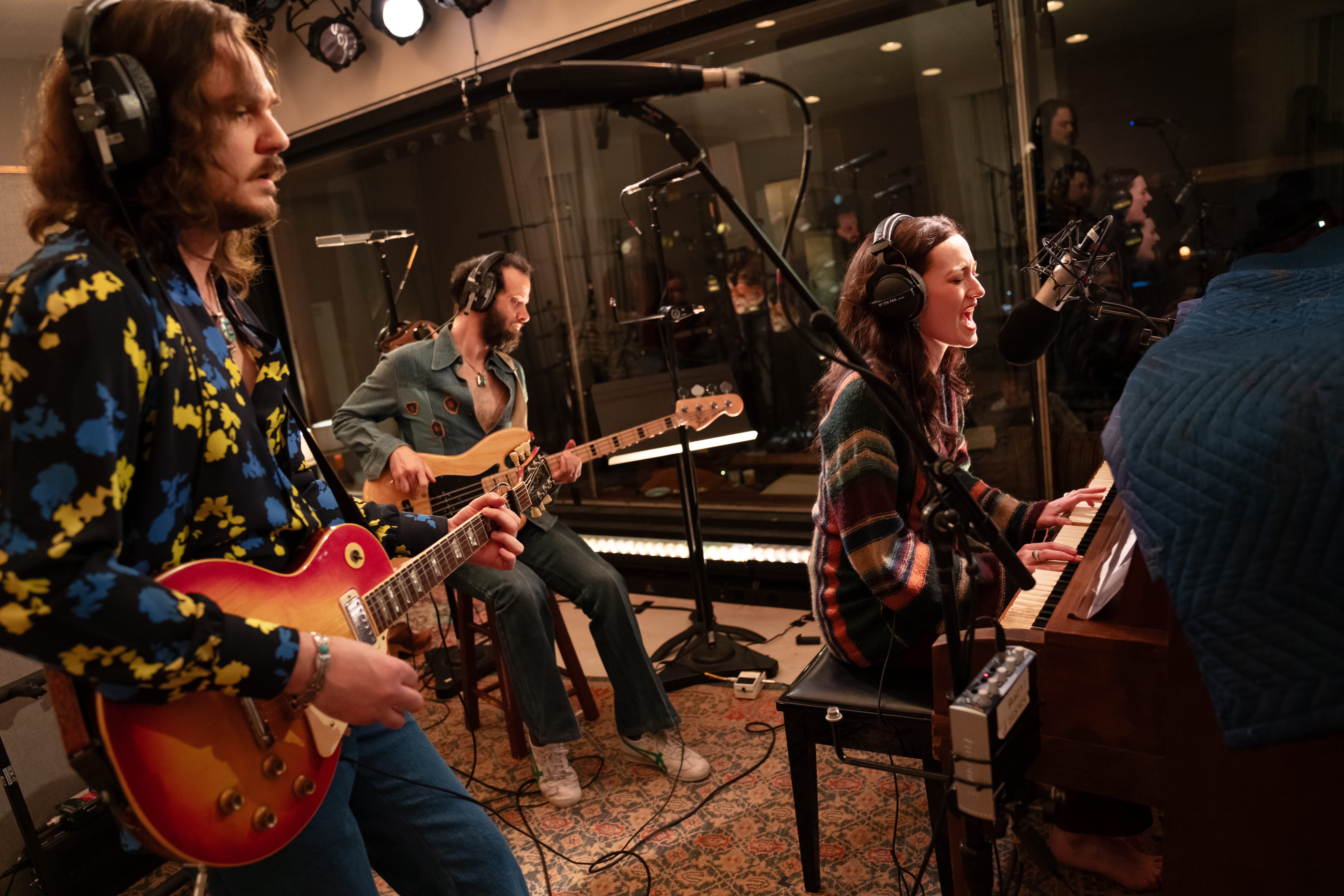War Horse Settles the Score

The National Theatre’s production of the Tony Award-winning play War Horse, now at the Vivian Beaumont Theatre, may be known for its amazing puppetry, but it’s just one element of the hit show. Indeed, when you listen to the new CD of the show’s music, which is being released by Masterworks Broadway on January 24, you might realize just how integral the score is to the story of a young English boy, Albert, and his beloved horse, Joey, during World War I.
As Tom Morris, the co-director of War Horse — which is still playing to full houses at London’s New London Theatre points out, “the show couldn’t work its emotional pull on audiences without its extraordinary musical score.”
When you play the CD, you might also easily imagine that Drama Desk Award-winning composer Adrian Sutton had 80 musicians at his command. As it happens, that’s far from the case. “That would be ideal,” says Sutton, “but unfortunately, stage budgets rarely allow that.”
For the recording, which features songs by celebrated British folk singer and musician John Tams, Sutton complemented his string and piano playing with five musicians (mainly on brass) and some electronic trickery. “I recorded the string sections and overdubbed them for fuller effect,” he notes.
It’s not surprising that Sutton was hired for the job. He not only composed the score for the acclaimed 2007 play Coram Boy, but has also worked on numerous British film and TV series. “In film, you’re fortunate if you get six weeks. There’s so much to do, you simply can’t handle it all yourself,” he notes. “Later, if the film is re-edited, the process begins anew.”
Working in the theater, Sutton says, is a very different experience. “It’s a much more relaxed and creative process — at least in the early stages when there’s not the pressure of deadlines,” he says. “I had seven months, and I was working as the play was taking shape. Everything came together so beautifully — because not just the music but also the design aspects were developed organically from the start. Then came the workshops and rehearsal. To be in the room working with everyone is an enormous asset.”
In those early stages, Sutton would even use snatches of other works in his quest to create the perfect score. “I would throw them against scenes,” says Sutton to see what captured the right mood and discover what worked and didn’t.

While the theatrical production uses only live musicians, Sutton had no qualms about employing technology for the recording. “Big-budget Hollywood films make use of sophisticated orchestral sound libraries to supplement and enhance what’s recorded on the scoring stage,” he notes.
To accomplish the task, Sutton turned to an array of machines. “Mac computers run a load of software to help get elements of the job done. Logic Pro, Pro Tools, DP, and Sibelius all have top-class orchestral sound libraries,” he says.
And while technology gets better and better every year, Sutton says achieving the right sound is still a challenge. “It’s not always easy to get the right symphonic sound with programming,” he states.” You have to be very careful. When mixing, you must have the right balance of EQ [equalizer] and reverb to have an effective technological extension of the orchestration. While the technology’s amazing, the ultimate watchwords are always realism and ‘liveness.'”
Indeed, no matter how great the finished product sounds, Sutton says nothing compares to the good old-fashioned basics. “The finest machines are my grand piano, violins, violas, and a bunch of pencils and paper,” he says. “They at least get the writing process started!”










